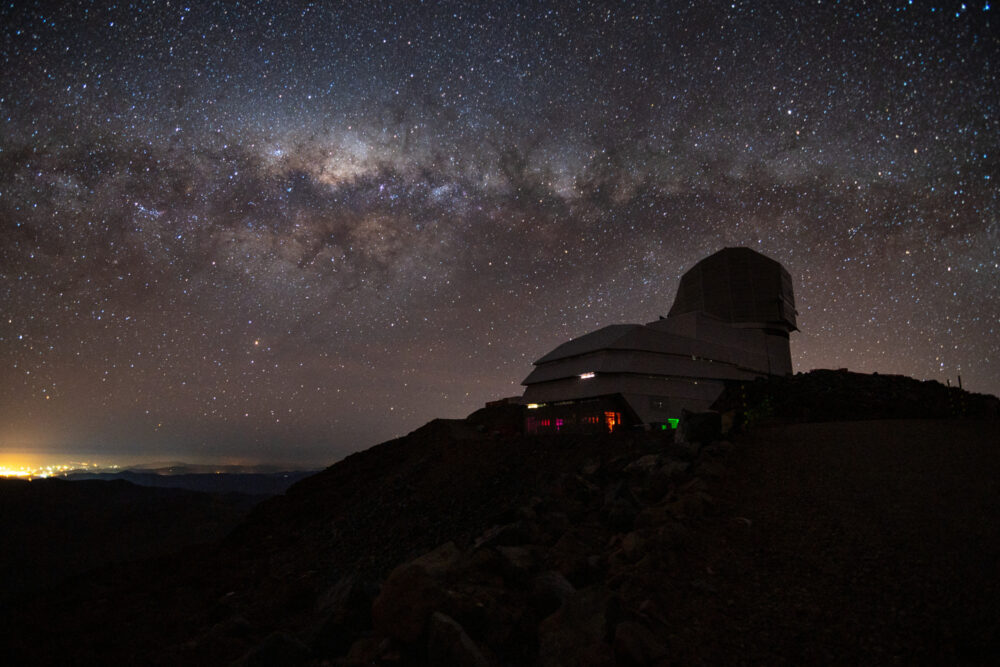Let us guide you through this ground-breaking observatory

Welcome to Rubin Observatory! We'd like to show you around and point out some of the things that make Rubin Observatory unique and interesting.
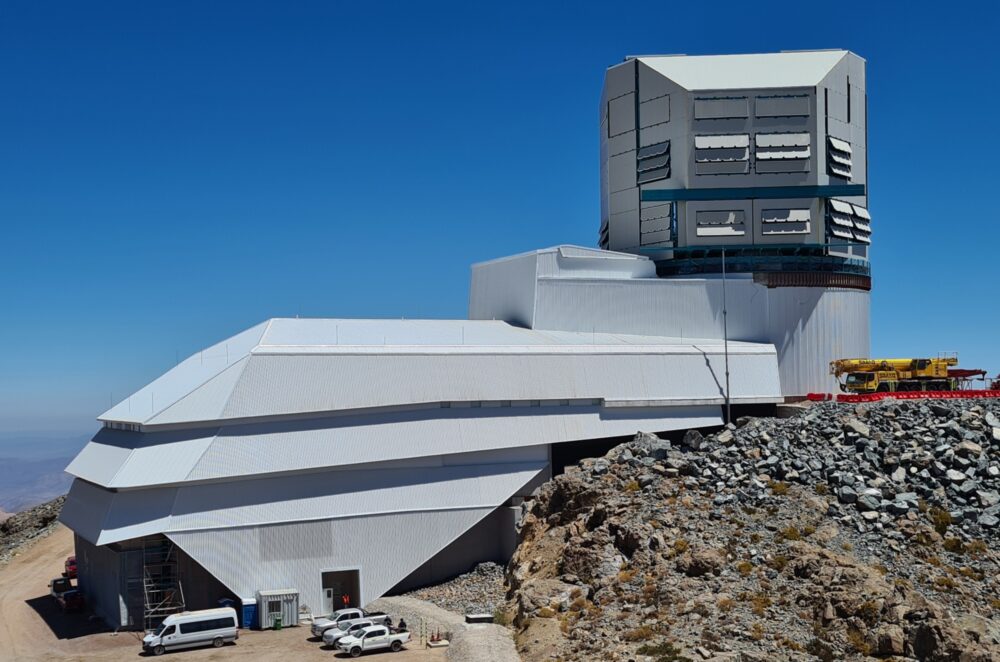
Rubin Observatory is located in Northern Chile, on top of Cerro Pachón, a mountain almost 2682 meters (9000 feet) high! Chile is a great place for astronomy—the air is dry and most nights are clear.
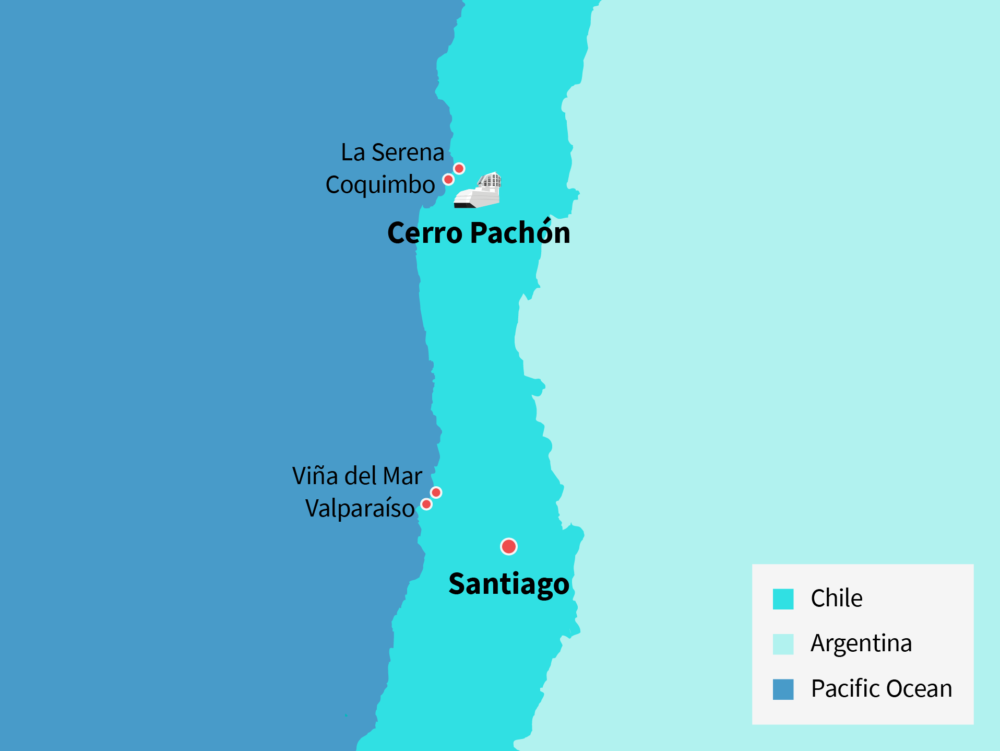
Rubin Observatory took almost a decade to build, and even from the outside it looks different from most other observatories.
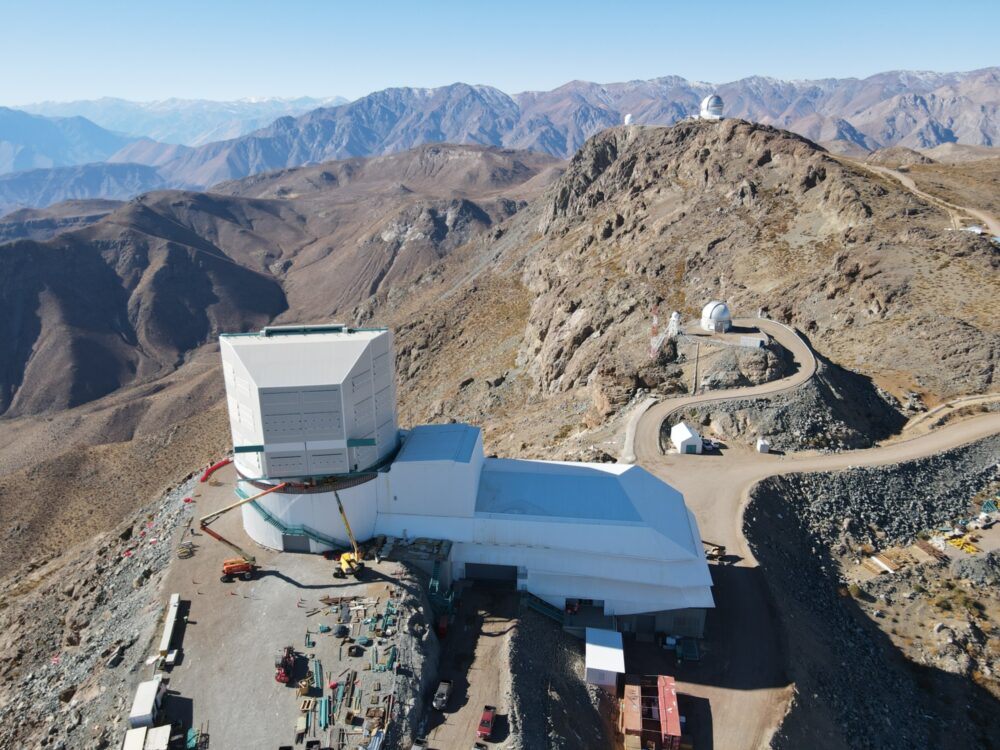
It has a big support building attached to the telescope dome. Inside, there’s specialized equipment and facilities that let us fix or maintain pieces of the telescope right in the building, so we don’t have to transport them down the mountain.
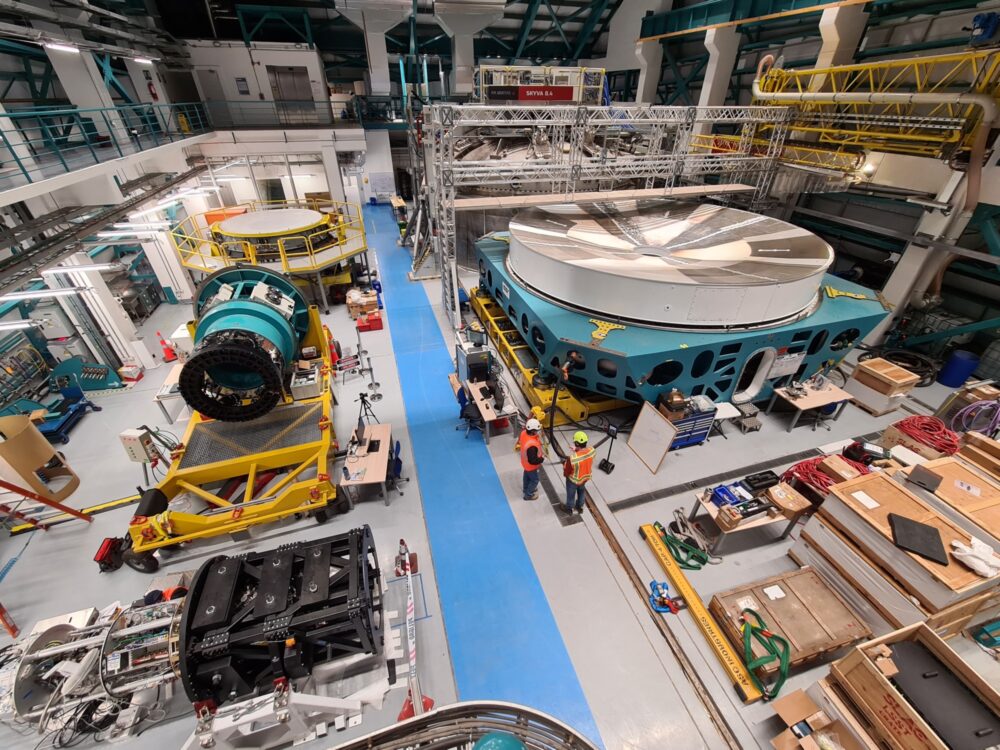
See this tunnel? It’s near the base of Cerro Pachón, on the only road that leads to the mountain. The only way to get equipment up the mountain is to drive it through this tunnel, so everything has to fit.

With some of the bigger telescope parts, like the 8.4 meter (27.5 foot) primary mirror, it was really close. We don’t want to do that any more than we have to…
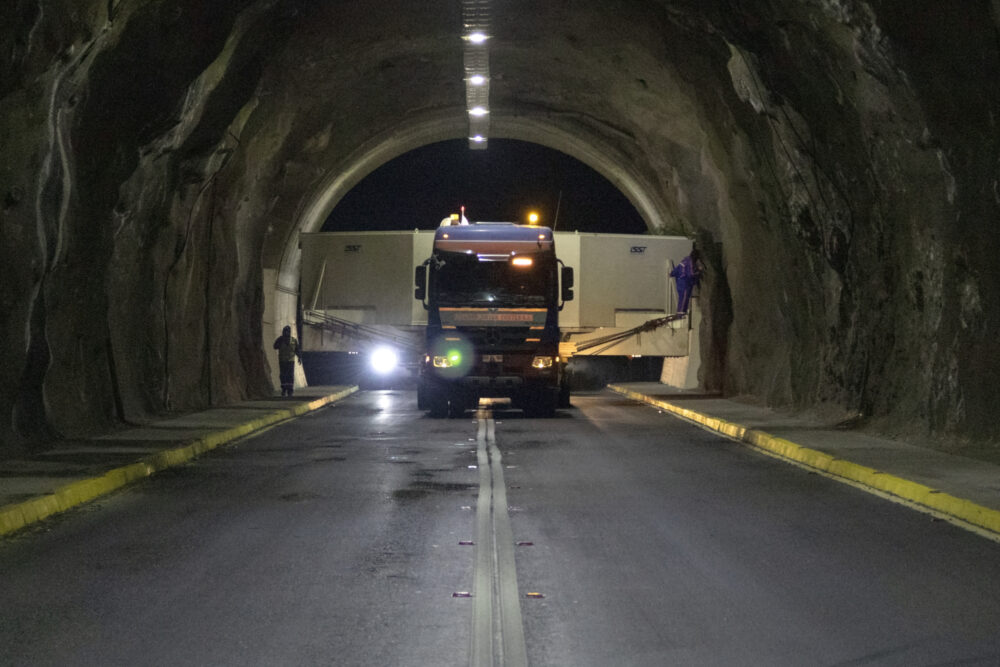
…so the Rubin Observatory building was designed to have enough space and the right equipment to do things like re-coat the mirrors, or work on parts of the camera in a special clean room, without ever leaving the building.

The observatory building has ten floors, so there’s a “vertical platform lift” that carries equipment between floors. The lift is HUGE and it can transport loads weighing almost a hundred tons. The roof at the top of the lift detaches so the lift can get all the way to the top floor!
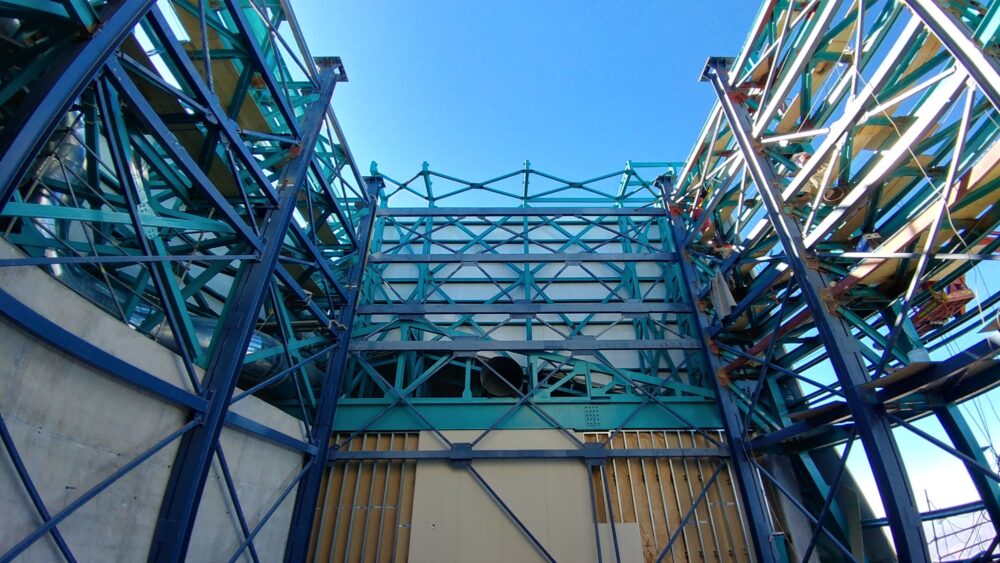
Are we hiding a flying saucer in the observatory? No, that’s the coating chamber. It was used to coat the telescope’s two mirrors before they were installed, and it’ll be used again to re-coat the mirrors whenever they need it.
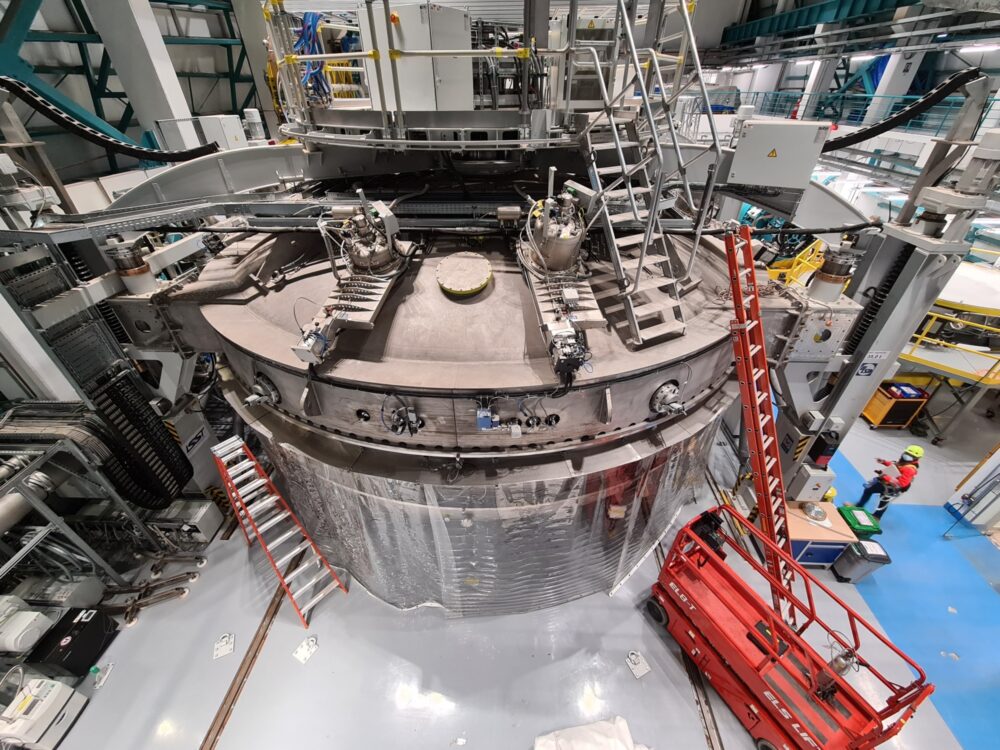
And now we get to the best part, the telescope! The teal-colored part is the structure that holds everything together. It rotates on a circular floor track , and the middle part tips the telescope from a straight-up position to a low-on-the-horizon position.
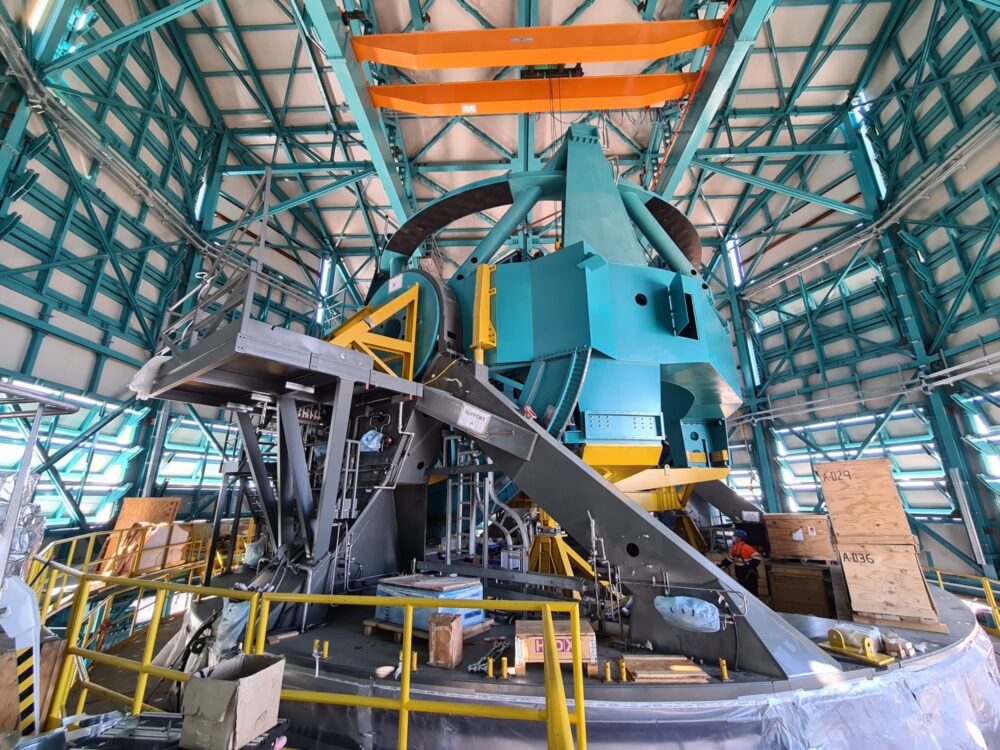
This structure holds two big mirrors and an enormous camera—it's the largest digital camera in the world! All together, this telescope moves fast—really fast—to capture and record a whole lot of light from space.
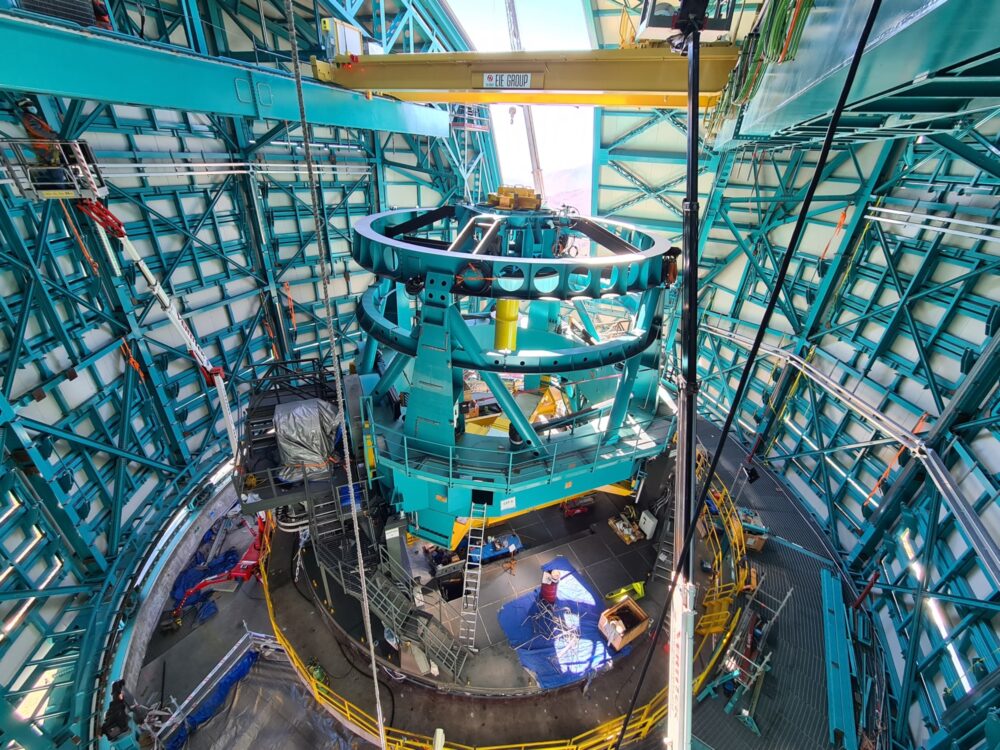
The telescope points out of an opening in this big dome. The dome is important because it protects the telescope from dust, rain, and light coming from other sources, like nearby cities. The images taken by the camera need to be crisp and clear in order to be the most valuable for science.
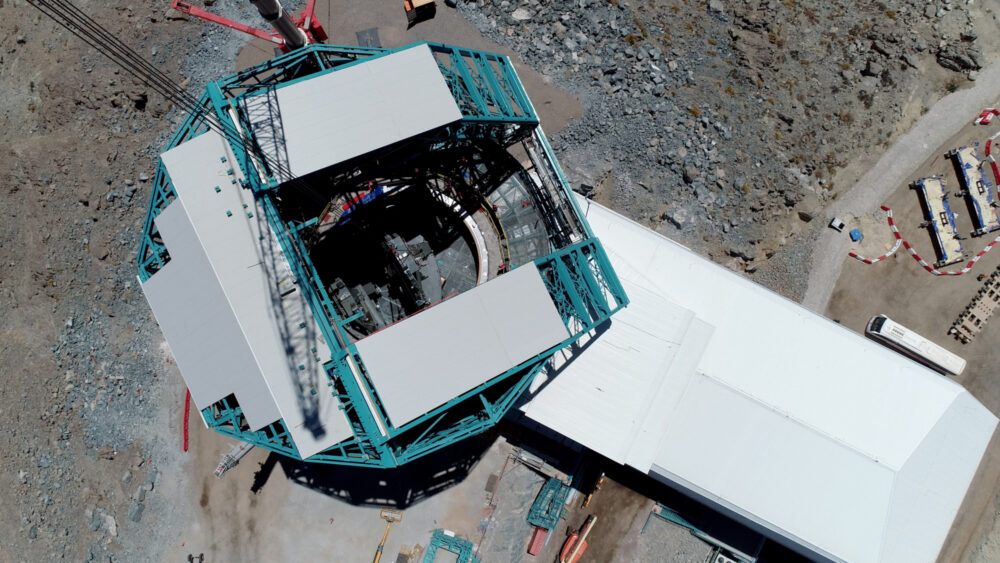
Look at all the objects in the dark and quiet sky above Cerro Pachón! But beyond those, there are billions more, and many of them will be detected by Rubin Observatory for the very first time.
